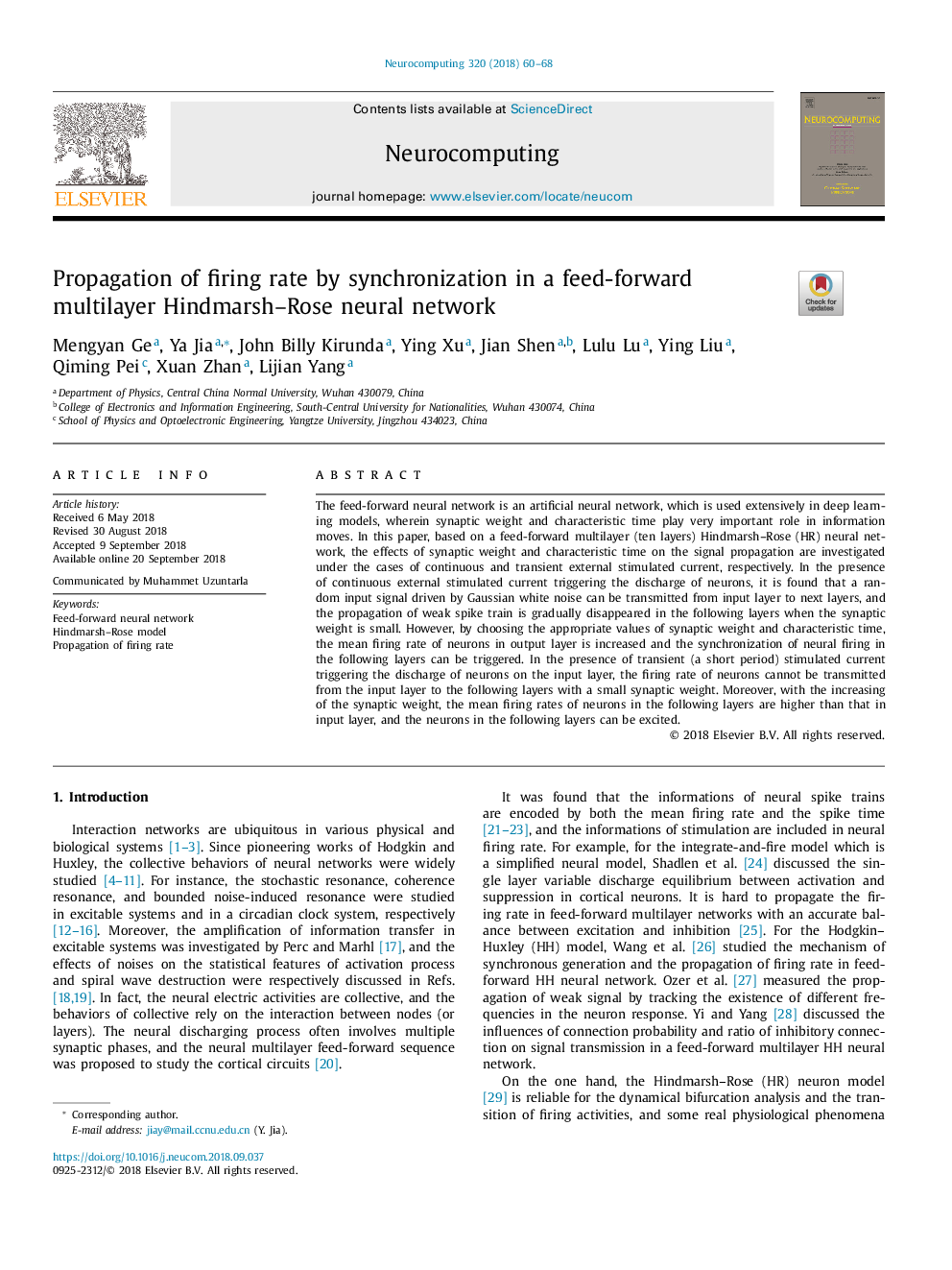| Article ID | Journal | Published Year | Pages | File Type |
|---|---|---|---|---|
| 11007998 | Neurocomputing | 2018 | 9 Pages |
Abstract
The feed-forward neural network is an artificial neural network, which is used extensively in deep learning models, wherein synaptic weight and characteristic time play very important role in information moves. In this paper, based on a feed-forward multilayer (ten layers) Hindmarsh-Rose (HR) neural network, the effects of synaptic weight and characteristic time on the signal propagation are investigated under the cases of continuous and transient external stimulated current, respectively. In the presence of continuous external stimulated current triggering the discharge of neurons, it is found that a random input signal driven by Gaussian white noise can be transmitted from input layer to next layers, and the propagation of weak spike train is gradually disappeared in the following layers when the synaptic weight is small. However, by choosing the appropriate values of synaptic weight and characteristic time, the mean firing rate of neurons in output layer is increased and the synchronization of neural firing in the following layers can be triggered. In the presence of transient (a short period) stimulated current triggering the discharge of neurons on the input layer, the firing rate of neurons cannot be transmitted from the input layer to the following layers with a small synaptic weight. Moreover, with the increasing of the synaptic weight, the mean firing rates of neurons in the following layers are higher than that in input layer, and the neurons in the following layers can be excited.
Related Topics
Physical Sciences and Engineering
Computer Science
Artificial Intelligence
Authors
Ge Mengyan, Jia Ya, John Billy Kirunda, Xu Ying, Shen Jian, Lu Lulu, Liu Ying, Pei Qiming, Zhan Xuan, Yang Lijian,
